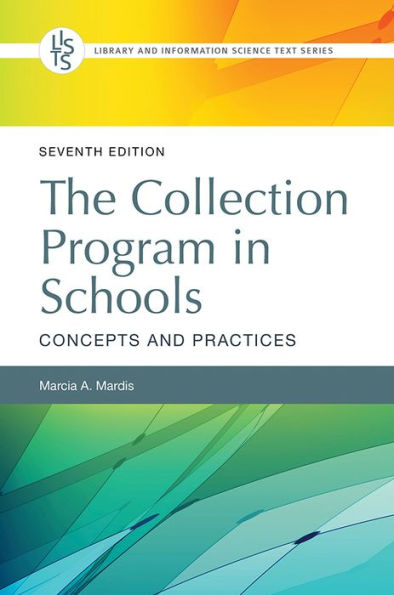This seventh edition of The Collection Program in Schools is updated in several key areas. It provides an overview of key education trends affecting school library collections, such as digital textbooks, instructional improvement systems, STEM priorities, and open educational resources (OER) use and reuse. Topics of discussion include the new AASL standards as they relate to the collection; the idea of crowdsourcing in collection development; and current trends in the school library profession, such as Future Ready Librarians and new standards from the National Board for Professional Teaching Standards.
Each chapter has been updated and revised with new material, and particular emphasis is placed on disaster preparedness and response as they pertain to policies, circulation, preservation, and moving or closing a collection. This edition also includes updates to review of curation and community analysis principles as they affect the development of the library collection.
This seventh edition of The Collection Program in Schools is updated in several key areas. It provides an overview of key education trends affecting school library collections, such as digital textbooks, instructional improvement systems, STEM priorities, and open educational resources (OER) use and reuse. Topics of discussion include the new AASL standards as they relate to the collection; the idea of crowdsourcing in collection development; and current trends in the school library profession, such as Future Ready Librarians and new standards from the National Board for Professional Teaching Standards.
Each chapter has been updated and revised with new material, and particular emphasis is placed on disaster preparedness and response as they pertain to policies, circulation, preservation, and moving or closing a collection. This edition also includes updates to review of curation and community analysis principles as they affect the development of the library collection.

The Collection Program in Schools: Concepts and Practices, 7th Edition
320
The Collection Program in Schools: Concepts and Practices, 7th Edition
320
Product Details
| ISBN-13: | 9781440876646 |
|---|---|
| Publisher: | ABC-CLIO, Incorporated |
| Publication date: | 07/19/2021 |
| Series: | Library and Information Science Text Series |
| Sold by: | Barnes & Noble |
| Format: | eBook |
| Pages: | 320 |
| Sales rank: | 296,165 |
| File size: | 18 MB |
| Note: | This product may take a few minutes to download. |
